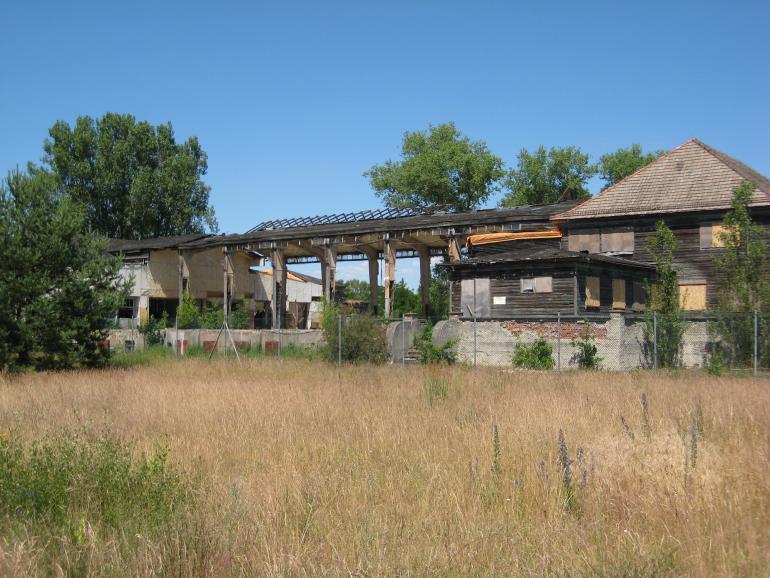Image Detail
Former Nazi-era canteen next to Sachsenhausen Concentration Camp, 2010 (it has since been restored)

Daniel Libeskind: I don’t know whether they still are, maybe they plowed them over, I don’t even know what the police is doing there...
Daniela Sandler: I think they restored a lot of them, and even the ones that lasted for a long time like in the past couple years they’ve started to restore some for the Gedenkstätte, the casino building
Daniel Libeskind: But this is also bad because putting money into fake ruins is also absurd. To remake the ruins is itself to me the irony of history, it is also erasing the ruins at the same time by remaking them. It becomes an aestheticized idea. And it’s aestheticized—really Hitler had this in mind. Because he had in mind, when he replanned Berlin, what would it look like when it was destroyed. So it is kind of a German thought. And that’s why I didn’t want the ruins. I wanted the ruins to be there but disappear, in some way be present in their disappearance.
Daniela Sandler: And I love them.
Daniel Libeskind: And I worked with a lot of people in ecology, experts in soil, experts in history, it wasn’t just some invention. We worked out how it would be, how long it would take, what would be the result, how nature would grow with it...